Posts Tagged: alfalfa
Day 5 of National Pollinator Week: The Leafcutter Bee
Day 5 of National Pollinator Week: Meet the leafcutter bee, family Megachilidae. It's a native pollinator, a solitary bee, and about the size of a honey bee. Its coloration--the black-and-white banded abdomen--makes it easily...
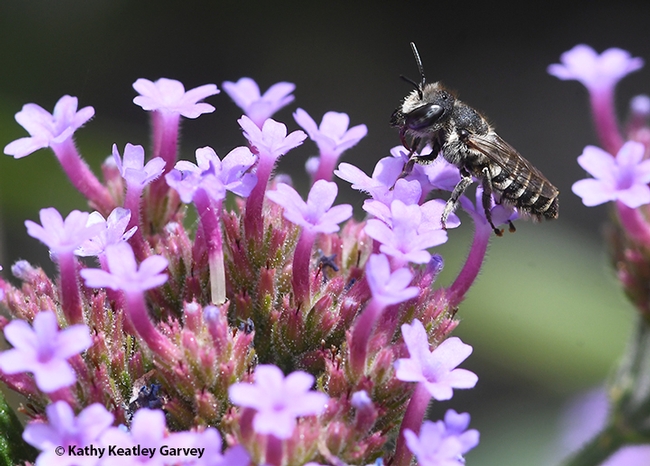
A leafcutter bee (family Megachilidae) foraging on Verbena in Vacaville, Calif. (Photo by Kathy Keatley Garvey)
The Good, the Bad and the Bugly
The good, the bad, and the bugly... Don't miss the UC Davis Bohart Museum of Entomology virtual open house on alfalfa and rice from 11 a.m. to noon on Thursday, Oct. 22. Cooperative Extension agricultural specialist Ian Grettenberger,...
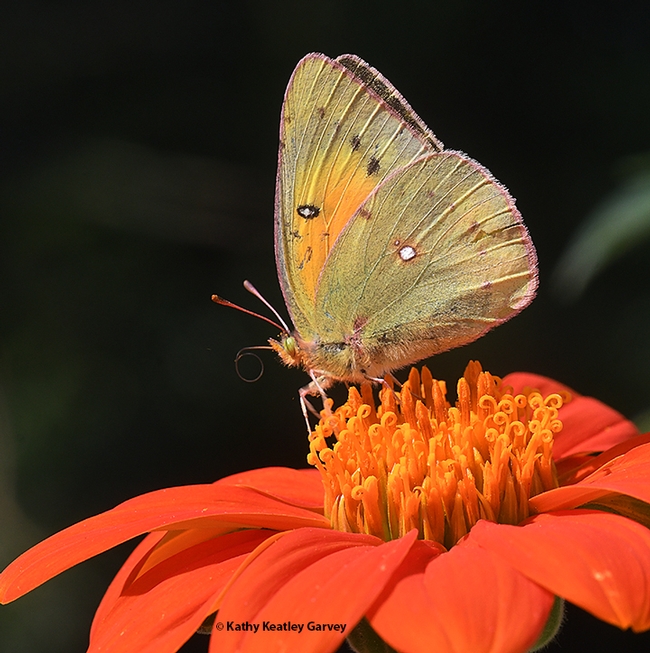
The larvae of the alfalfa butterfly are major pests of alfalfa. This butterfly is sipping nectar from a Mexican sunflower, Tithonia rotundifolia. (Photo by Kathy Keatley Garvey)
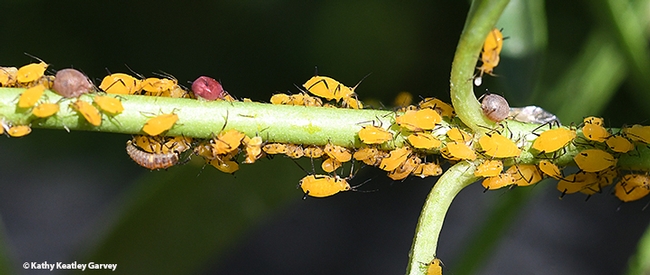
Aphids suck the plant juices of alfalfa. This image shows aphids on a tropical milkweed stem and an immature lady beetle (ladybug). The larvae also eat aphids. (Photo by Kathy Keatley Garvey)
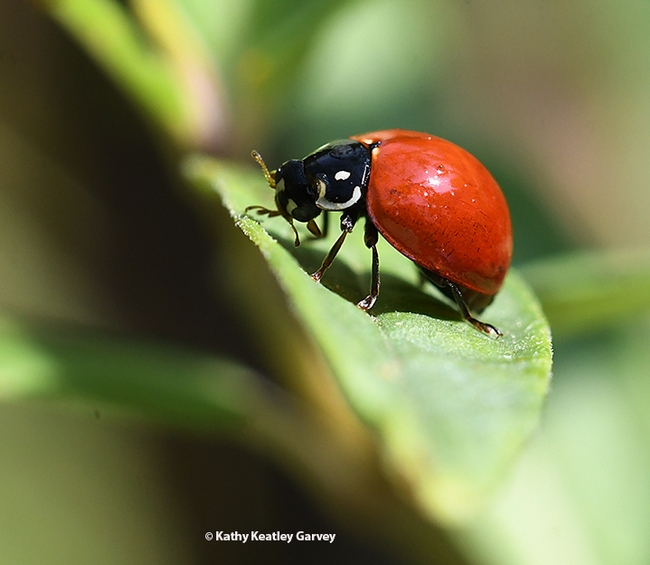
The lady beetle, aka ladybug, is a beneficial insect. It can devour some 50 aphids a day. (Photo by Kathy Keatley Garvey)
Bohart Museum Virtual Open House: Think Pests of Alfalfa and Rice
Mark your calendar. The Bohart Museum of Entomology at the University of California, Davis, is hosting a virtual open house dealing with alfalfa and rice. Cooperative Extension agricultural specialist Ian Grettenberger, assistant...
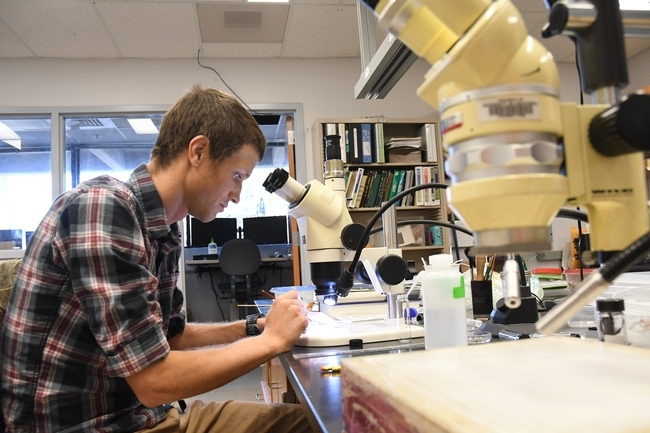
Cooperative Extension specialist Ian Grettenberger at work in his lab at UC Davis. (Photo by Kathy Keatley Garvey)
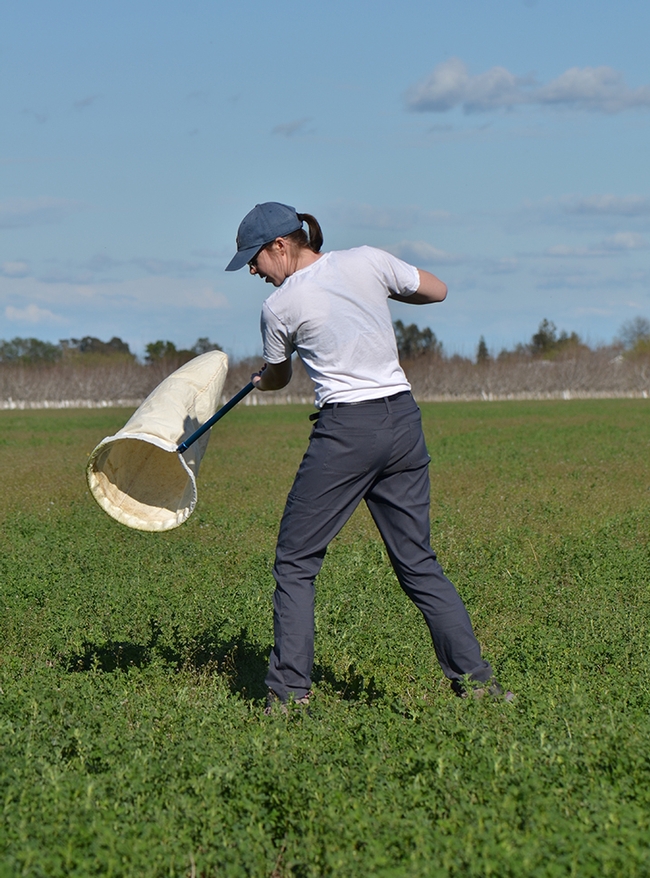
Graduate student Madi Hendrick sweeping an alfalfa field for pests.
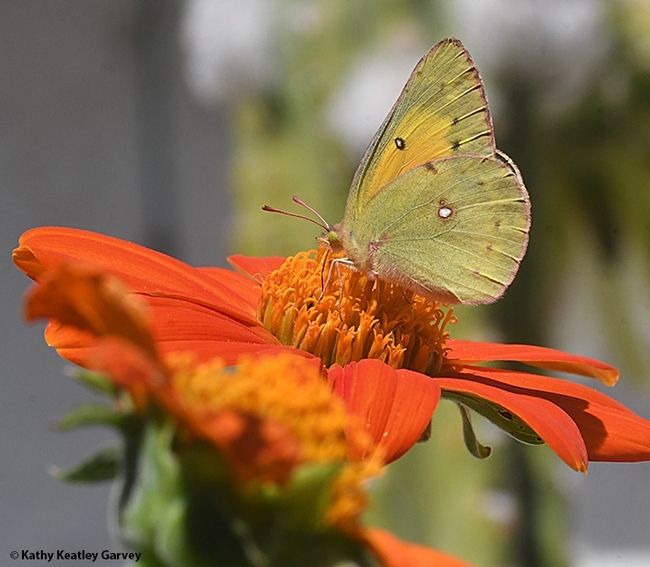
In its adult form, the alfalfa butterfly is attractive. In its larval form, it's a pest of alfalfa. (Photo by Kathy Keatley Garvey)
Wrong Place at the Wrong Time
For the first butterfly, it was the right place at the right time. An alfalfa or sulfur butterfly (Colias eurytheme) fluttered into our pollinator garden in Vacaville to sip some nectar from a Mexican sunflower (Tithonia rotundifolia). It...
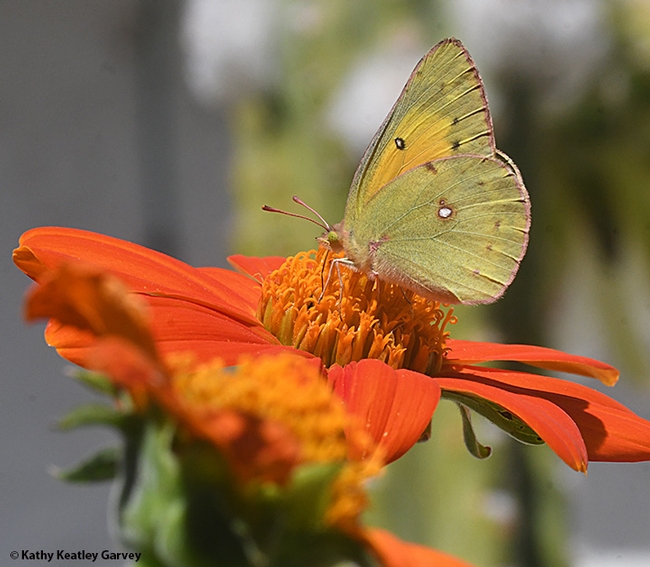
An alfalfa butterfly, Colias eurytheme, nectaring on a Mexican sunflower (Tithonia rotundifolia). (Photo by Kathy Keatley Garvey)
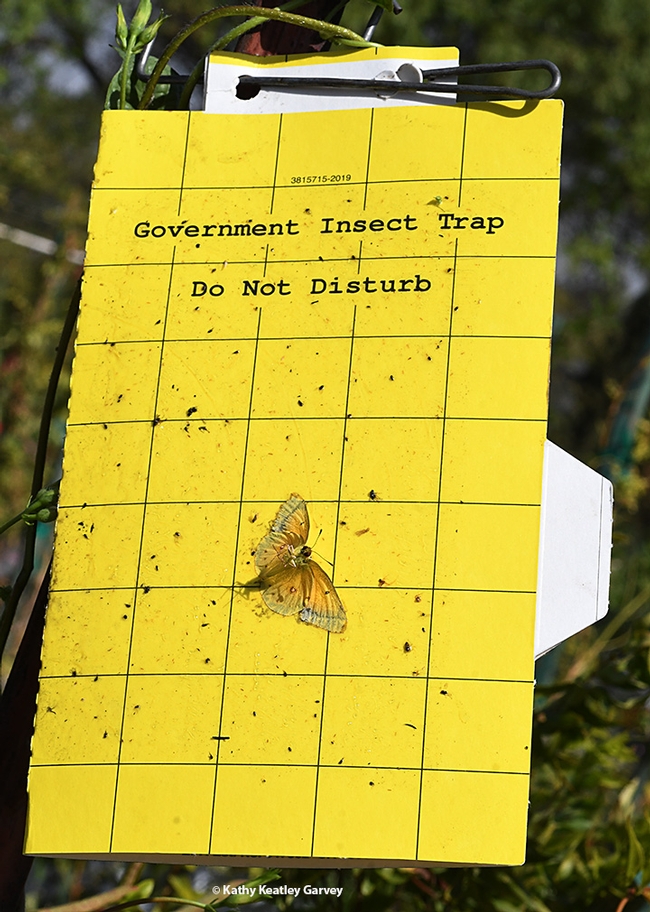
Gotcha! This unfortunate alfalfa butterfly fluttered into the wrong place at the wrong time. In its larval stage, it is a pest of alfalfa. (Photo by Kathy Keatley Garvey)
A Bug That's Not Wanted in the Vineyards
Back in July of 2016, a team of researchers affiliated with the University of California, Davis, wrote in the journal Phytopathology that the three-cornered alfalfa leaf hopper, Spissistilus festinus, transmits the virus that causes grapevine...
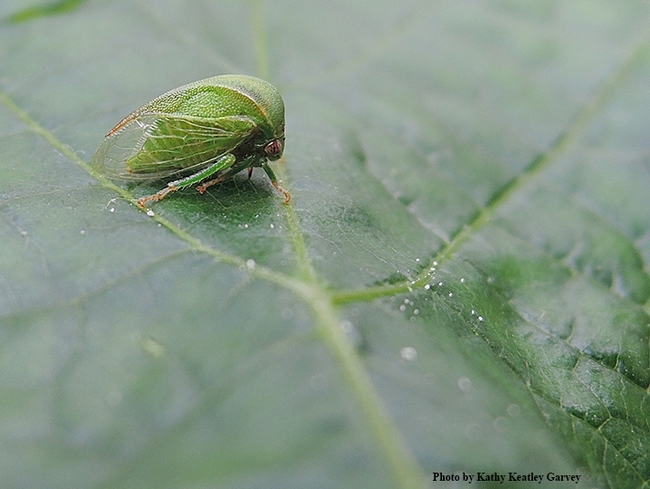
The three-cornered alfalfa leaf hopper, Spissistilus festinus, transmits the grapevine red blotch virus. (Photo by Kathy Keatley Garvey)
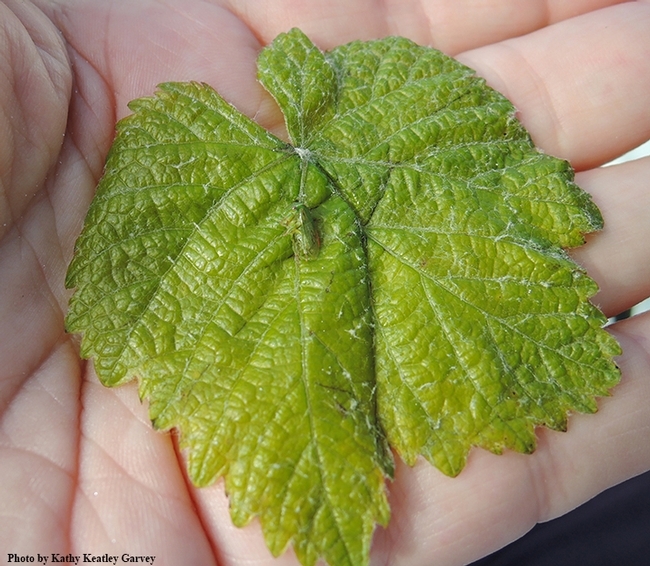
A three-cornered alfalfa leaf hopper, Spissistilus festinus, on a grape leaf. (Photo by Kathy Keatley Garvey)
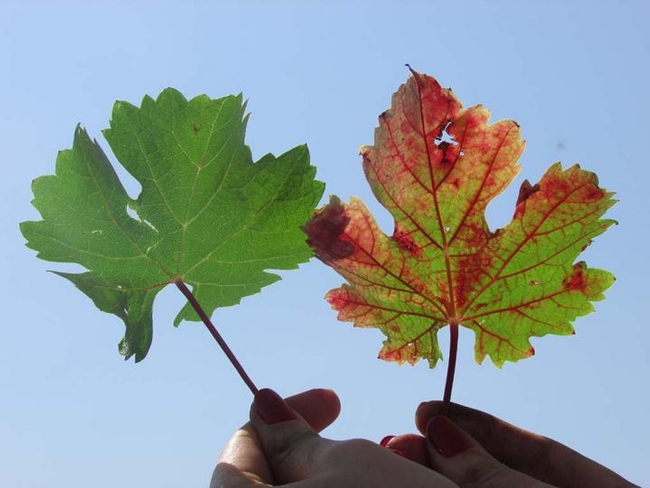
The leaf on the right has grapevine red blotch virus. (Photo by Raul Girardelo, UC Davis)

